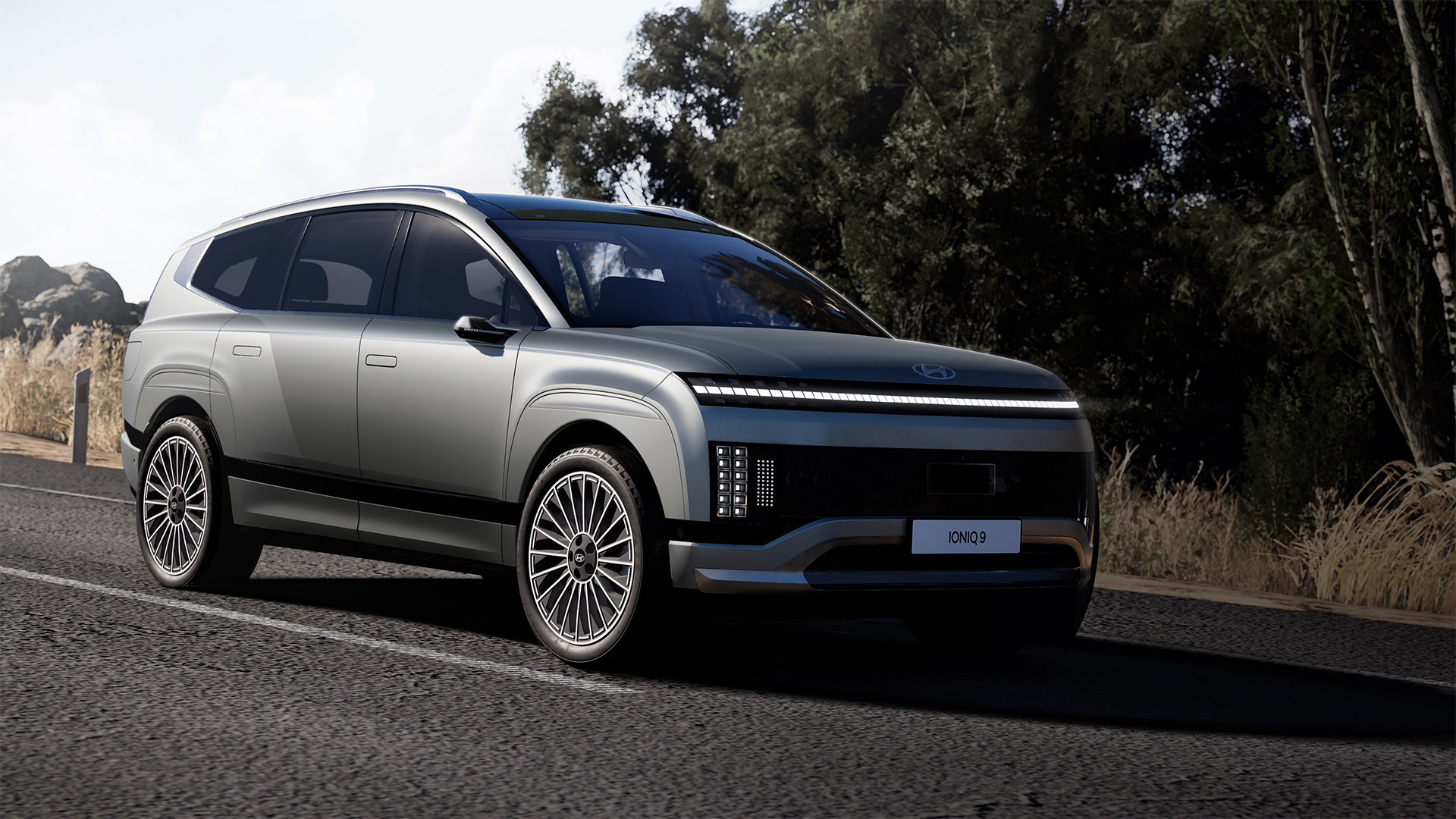
- Spacious SUV arrives to take on the Volvo EX90 and Kia EV9
- Aerodynamic shape means maximum efficiency
- Ioniq 9 will be launched in Korea and North America early next year
During a glitzy unveiling in the Hollywood hills, Hyundai took the wraps off the longest car in its current line-up – and the one it hopes will appeal to the local audience of big car lovers.
The Ioniq 9 joins the Ioniq 6 electric Sedan and the popular Ioniq 5 crossover, riding on the same E-GMP electric platform as the recently-released EV 9 from sister company Kia. But here, Hyundai has stretched the wheelbase to the max (3,130mm / 123.2 inches) to ensure it can offer class-leading roominess and comfort.
Global head of design, Sangyup Lee, explained that the vehicle's sleek silhouette is “almost entirely” influenced by wind tunnel testing and that the car he was showing me around was still being fettled in a wind tunnel right up until just a few months ago.
“Our designers spent more time in the wind tunnel than they did in our studios. But all of the curves are there to reduce the drag coefficient," he added.
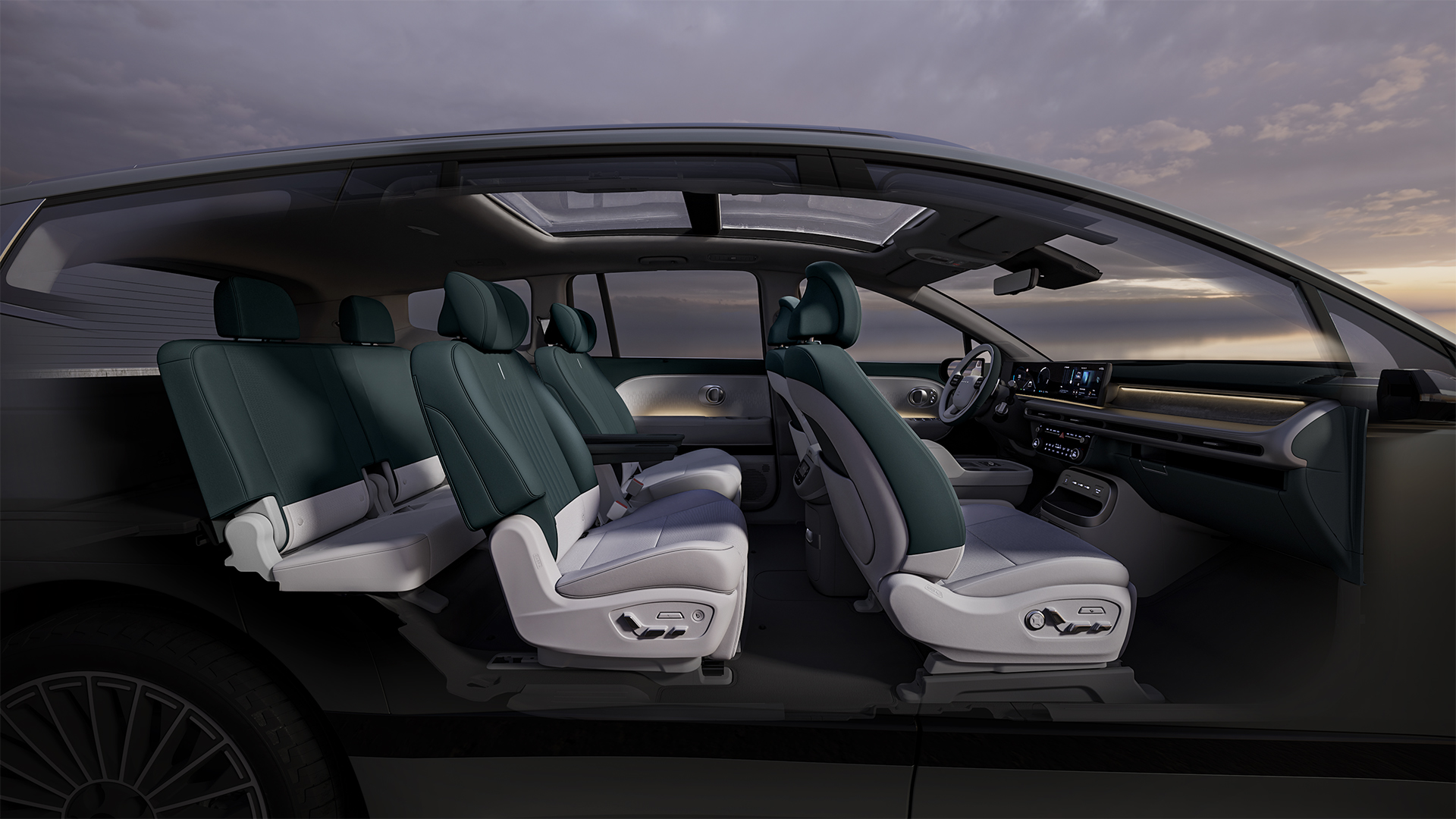
"We managed to lower it to 0.25 for those models with digital wing mirrors, which is less than that of our Sonata and Elantra sedan models,” he says.
Far from the most riveting subject, the drag coefficient - or Cd number - is a big deal when it comes to electric vehicles, as it generally improves their slipperiness and overall efficiency. Hyundai says it is aiming for a targeted energy consumption of 3.2 miles per kWh, which betters that of both the Kia EV9 and the Volvo EX90.
As a result, the Ioniq 9 is good for around 385 miles on a single charge of the whopping 110.3kWh floor-mounted, NMC lithium-ion battery pack – the largest currently available from the Korean marque.
Pixel burn
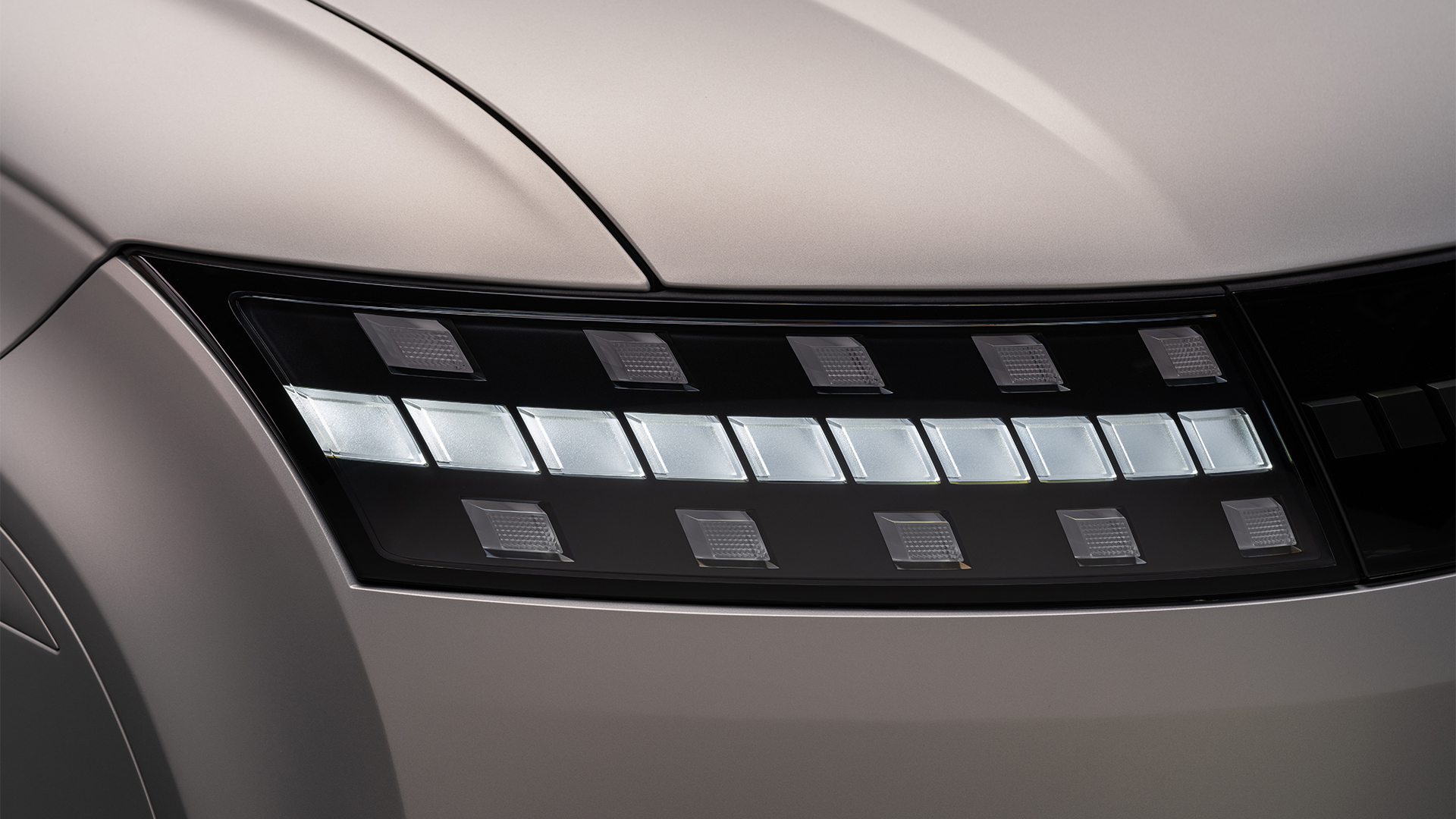
Continuing the brand’s love affair with Parametric Pixel LED lamps, the Ioniq 9 features a full array of cuboid lights that cover much of the front end and surround the rear tailgate, which is neatly pulled in like a boat tail.
Sangyup Lee says the pixelated lights give a neat nostalgic touch, citing one of his favorite retro video games in Tetris. “Kids these days play Roblox,” he added, while explaining how he plans to take the “pixel identifier” to the next level with future models.
The retro theme continues at the front, with a large black fascia housing all of the sensors and cameras required for advanced levels of autonomous driving.
Sangyup describes it as a “VHS cassette” that can be removed, allowing the team to update the internals as technology improves without having to change the overarching design of the front end.
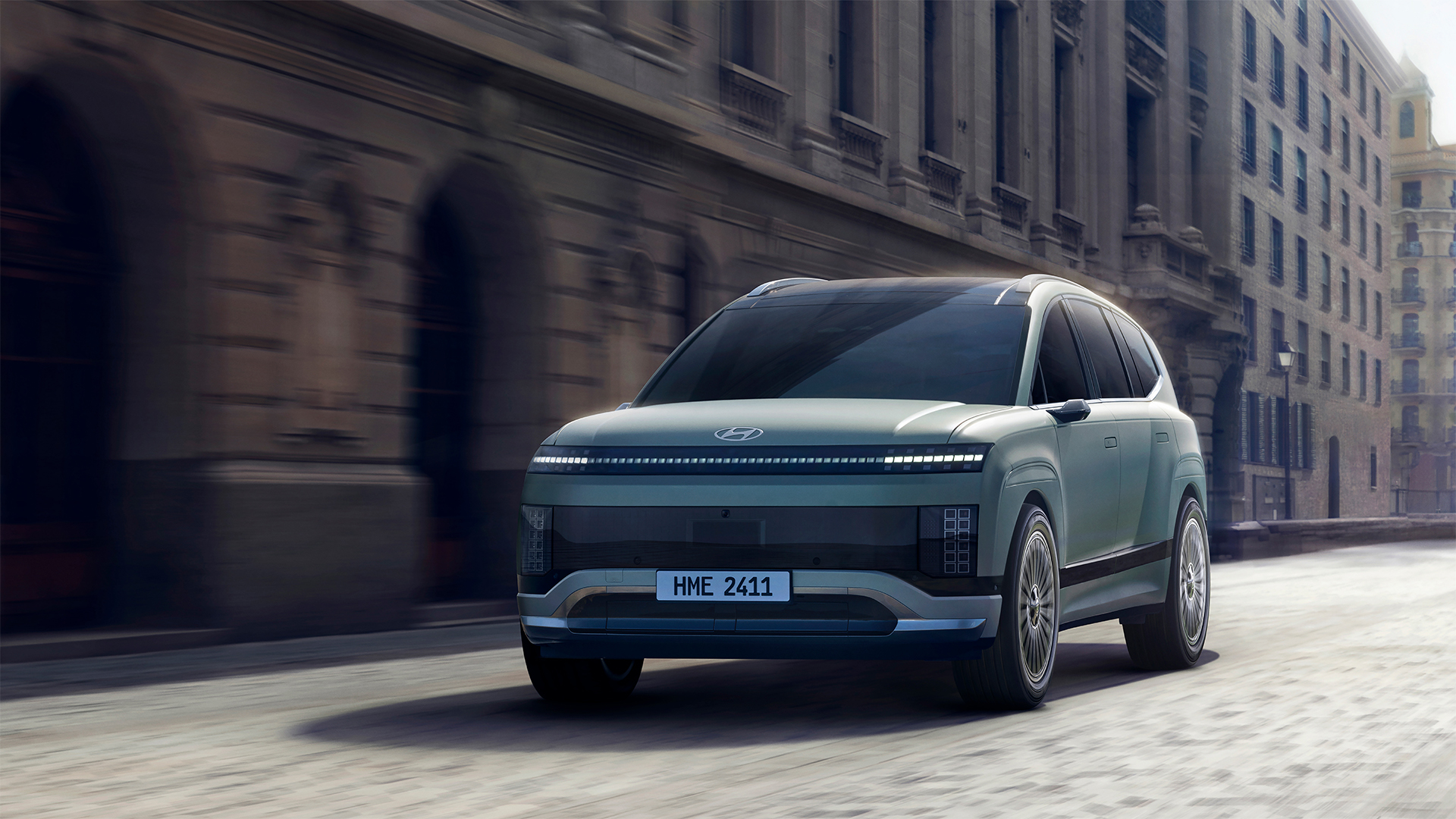
Available as either a three-row seven-seat model, or a six-seat version, there’s masses of room inside for up to seven adults. Sit in the front seat and you almost have to send a carrier pigeon to communicate with those in the rearmost rows.
All of the interior seats fold and slide elegantly at the press of a button, making it simple for everyone to get in and out, while front seat passengers get the latest Relaxation Seats that use pressure and vibration to stimulate blood flow and circulation.
Six-seat versions feel even more palatial inside, with the ability for the second row of ‘captain’s chairs’ to swivel and face those in the third row. Like a London cab but a lot more comfortable and luxurious.
“We listened to feedback from customers of the six-seat Kia EV 9 and found that some were complaining that the rear passengers brushed knees when the chairs were facing each other, which is part of the reason why we stretched the wheelbase, to ensure maximum legroom for all occupants,” Sangyup Lee explained.
Practical magic
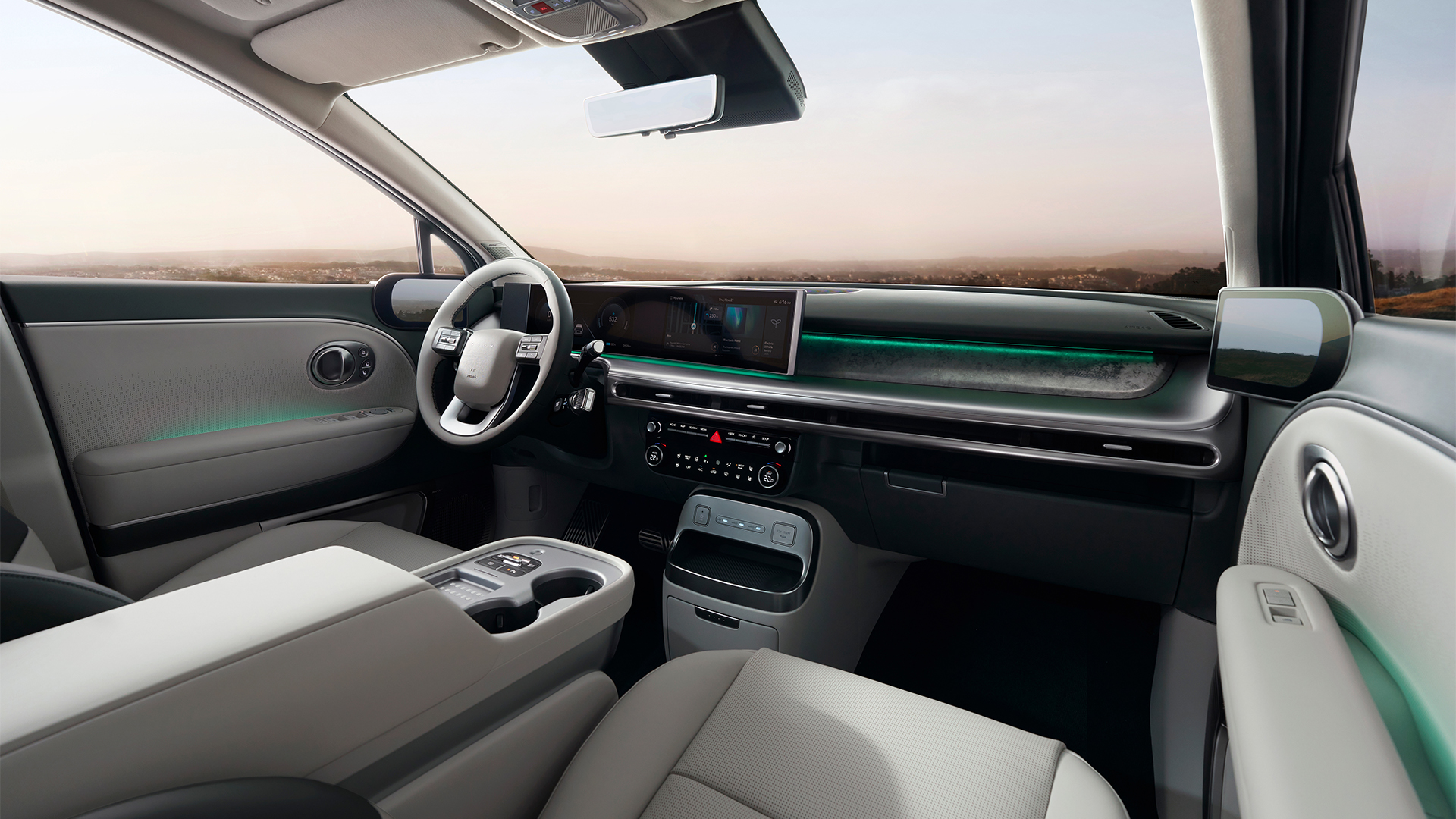
Clearly designed with families and folks with a lot of kit to carry in mind, the Ioniq 9 boasts plenty of neat and clever touches. There are two wireless charging trays for smartphones, for example, with one of those cubbyholes using UV-C invisible light to sterilize small items, like keys, wallets and your dirty, finger-smudged phone.
There’s also a revised ‘Universal Island’ that sits in-between the driver and front passenger. It’s a little bit like the laptop part of the taco tray found in the Kia EV3, but this entire unit slides backwards or forwards by 190mm.
Why? Well, because self-confessed people-watcher and designer, Sangyup Lee, noticed the number of folk clambering across seats to exit a car parked too closely to other vehicles or a wall.
As a result, this console allows a neat ‘walk-through’ area for occupants to move from one side of the vehicle to the other, but also allows passengers to access the almost 20-liters of storage space from the back seats.
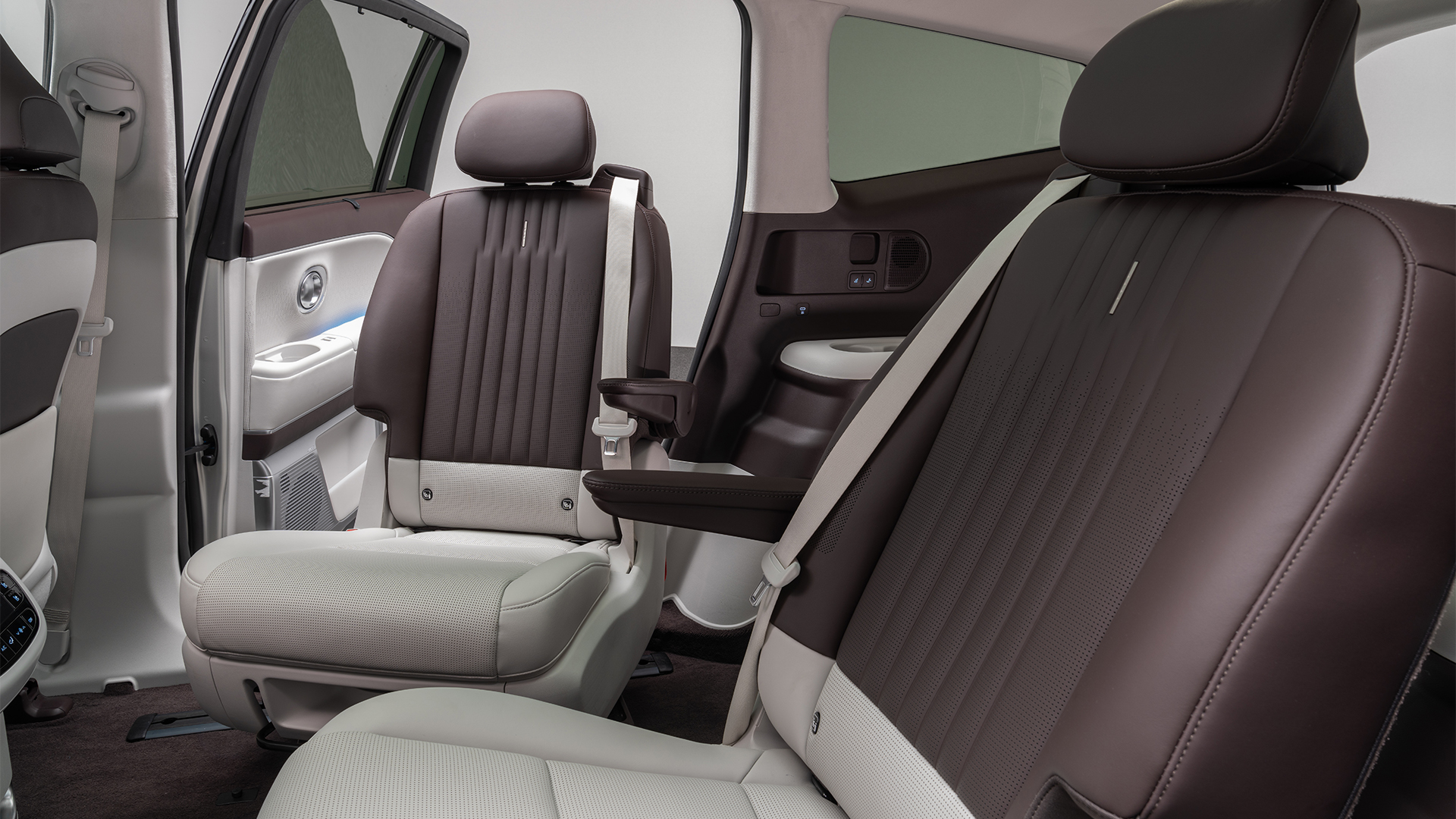
Predictably, there are USB-C charging outlets everywhere and vehicle-to-load functionality allows for most electrical devices to be powered by the car’s battery. What’s more, all of the seats can be folded completely flat in the rear to create an enormous, car-camping friendly space to hang out.
The infotainment system is made up of a 12-inch cluster and classy, curved 12-inch touchscreen system, but with much of the core functionality committed to good old fashioned buttons.
Lee confirmed that Hyundai was very much in favor of physical buttons in order to reduce the distraction posed by navigating endless menus on touchscreen displays.
Power to the people
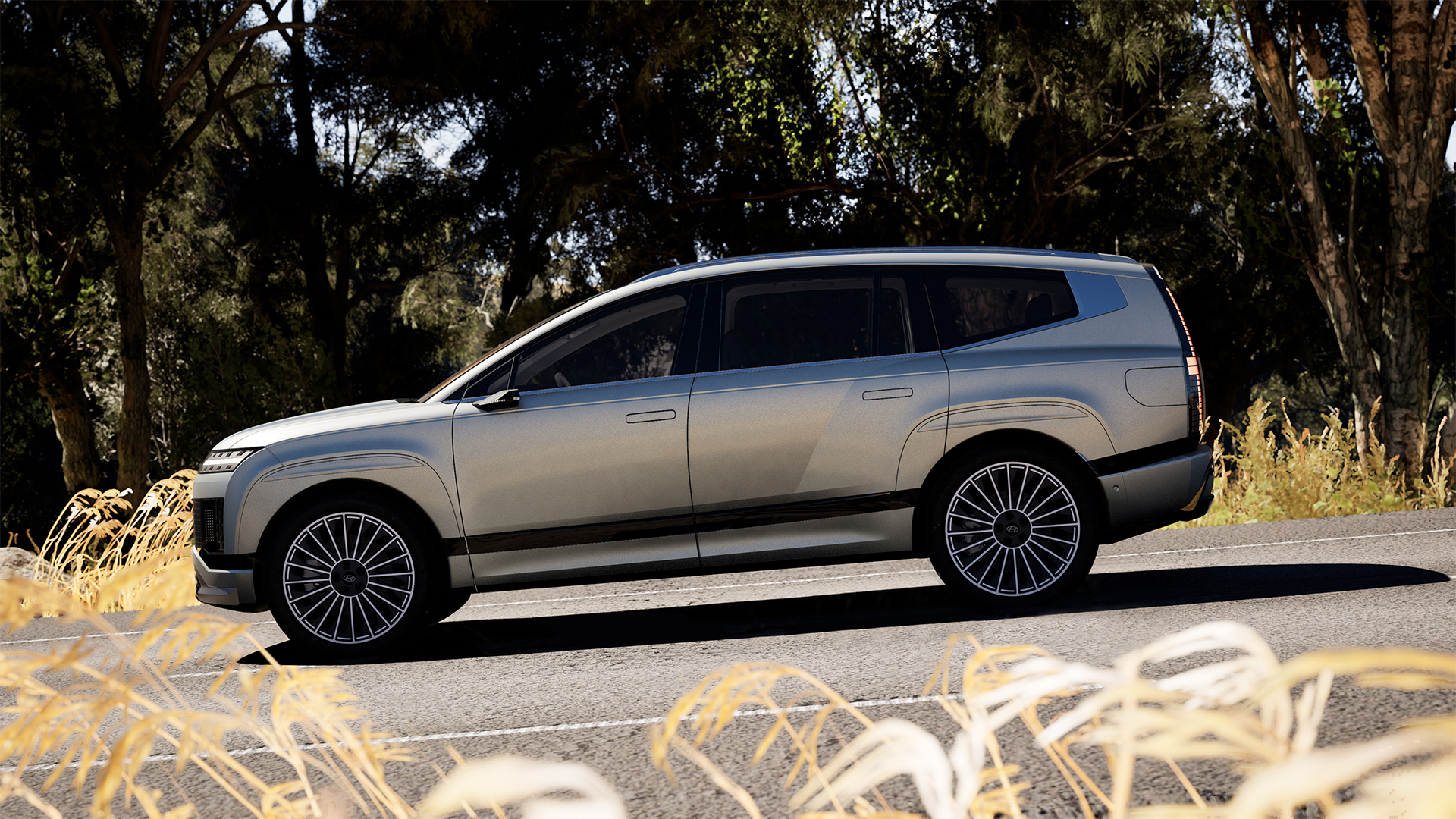
The Ioniq 9 will first go on sale in Korea and North America, where models will be delivered in the first half of 2025. The UK and Europe will have to wait until around May 2025 and prices haven’t been announced for any markets.
That said, Hyundai has revealed that the large electric SUV will be powered by a 160kW rear motor in the rear-wheel-drive models, which will be able to hit 62mph from rest in 9.4 seconds.
A Long Range AWD version adds another 70kW motor to the front axle, while the Performance AWD model uses two 160kW motors. This most potent version can dispatch a 0-62mph sprint in just 5.2 seconds and go on to a top speed of 124mph. Not bad for a ridiculously heavy SUV.
Speaking of weight, the Ioniq 9 also offers a respectable towing capacity of 5,000lbs, which is on par with a Tesla Model X. However, Hyundai says the vehicle features a ‘trailer mode’ that automatically detects the weight of the trailer and adjusts the predicted battery range accordingly.
It’s a big, clever SUV that’s sure to resonate with a US market and, although final opinions will have to be reserved for a test drive, the Ioniq 9 looks to pack enough clever features and interior luxury to stick it to the more established ICE players.
Its slippery shape and wind-tunnel-tested exterior design also mean it might be marginally more efficient than its Kia EV 9 sibling – something that has let down an otherwise excellent electric SUV.
You might also like
- Hyundai patent suggests the company is moving wireless EV charging roads to the next level
- EVs are finally embracing physical buttons – with Hyundai being the latest to admit to a touchscreen backlash
- The biggest reason to not buy a new car? Overbearing safety systems that make me never want to drive again







